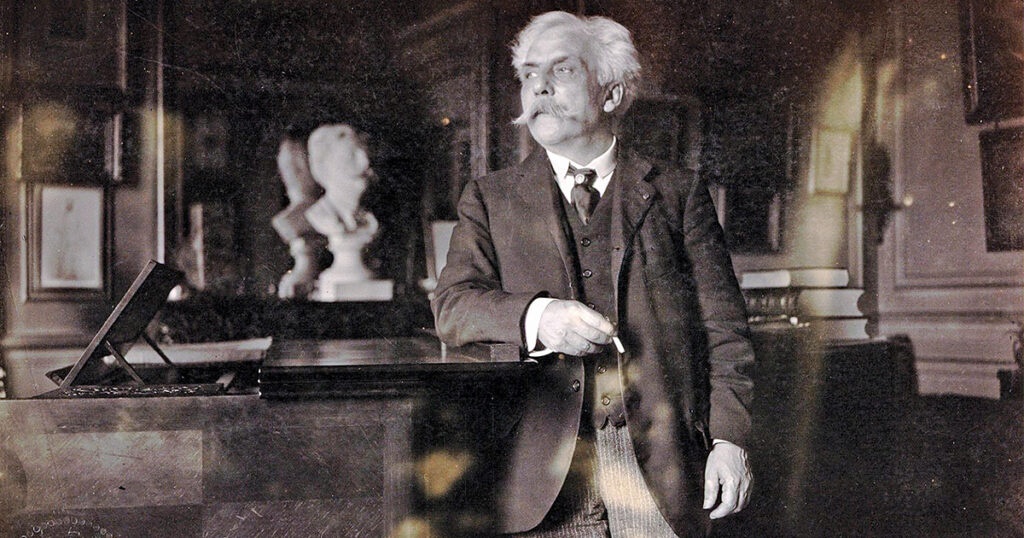
One hundred years ago, the composer Gabriel Fauré died, leaving behind a body of work noted for its elegance and refinement. After training to be a church organist and studying with Camille Saint-Saëns, Fauré went on to teach at the Paris Conservatory, serving as its director from 1905 to 1920. Among his most important compositions are the Requiem (1887), the incidental music to Pelléas et Mélisande (1898), a wide range of piano pieces, and several chamber works completed late in his life, including the Violin Sonata No. 2 (1916) and Piano Quintet No. 2 (1921). Perhaps his art is best represented, however, by the more than 100 songs—charming, lyrical, unpretentious—that he wrote over a period of six decades. Fauré’s music exists in a world largely untouched by the harmonic and rhythmic innovations of contemporaries such as Claude Debussy and Igor Stravinsky. Not that certain works, such as the exquisite song cycle La bonne chanson, with its chromaticism and frequent modulations, don’t push boundaries. For the most part, however, Fauré’s music communicates not tension but beauty, serenity, and joy.

